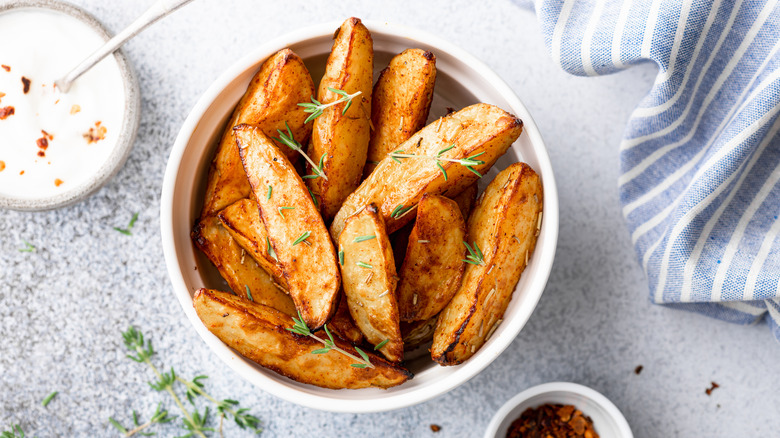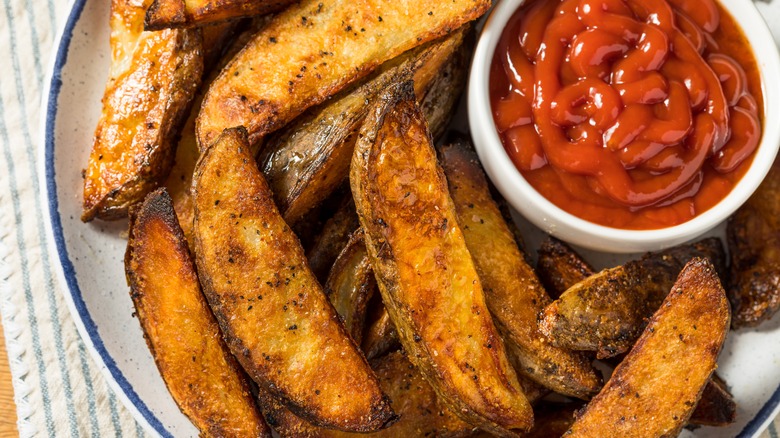Your Foolproof Guide To Cutting Potato Wedges
We may receive a commission on purchases made from links.
Hearty, thick-cut potato wedges rank pretty high on our list of french fries. Where shoestring or matchstick fries are all about the crunch, potato wedges have the perfect ratio of crispy edges to fluffy, potato insides. They're also a lot easier to prepare if you can master a pretty foolproof technique.
Whether you're using large russet potatoes or variably sized Yukon golds, dividing them into equally sized wedges takes a mere handful of slices. Peeling the potatoes before slicing them is a matter of personal taste. The peels will fry or roast into especially crispy foundations, but if you peel them, you get a uniform browning on every surface.
To cut the wedges, start by cutting the potato in half lengthwise. Place the potato halves cut-side down, then divide the halves lengthwise into thirds or fourths depending on their size. Hold the knife at an angle wherein the blade slices at a diagonal towards the center of the potato half. If you're looking for a sharp knife that'll cut through a hard raw potato like butter, try this Ontel Everblade Chef's Knife.
Wedges should have a base no more than three-quarters of an inch thick. Most importantly, you should make sure they're all roughly the same size so that they cook and crisp at the same rate.
Cooking and seasoning tips for potato wedges
Wedges can be a type of french fry, but they can also be a roasted potato. Either way, they provide plenty of surface area for seasoning and can crisp up beautifully. Since wedges are thick-cut, par-boiling them before roasting or deep frying them is the key to fluffy insides and perfectly browned, crunchy skins. Starchy potatoes like russets are optimal for making potato wedges because that extra starch is what creates a shatteringly crispy surface.
Once you've boiled, drained, and dried the wedges, steps diverge depending on the cooking method. If you deep fry them, you can throw the wedges into hot oil, seasoning them fresh out of the fryer. Deep frying is all about maintaining an even oil temperature, which is much easier if you use a cast iron skillet, like this 10.5-inch skillet from Lodge.
If you're roasting your wedges, coat them in oil and seasonings before placing them on a preheated baking sheet and into the oven at 500 degrees Fahrenheit for 10 to 12 minutes on each diagonal surface. Warming up the baking sheet has the same effect on potatoes as a preheated skillet has on cornbread; the surface touching the sheet will become extra crispy while expediting the cooking process.
Seasoning ingredients run the gamut, from a blend of parmesan cheese and Italian herbs to serve with this lemony garlic aioli, to paprika, cayenne, and Zaatar to serve with a nutty and aromatic tahini ranch sauce.

